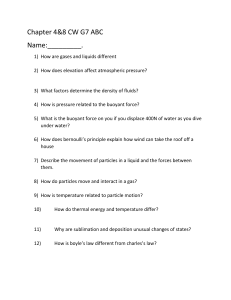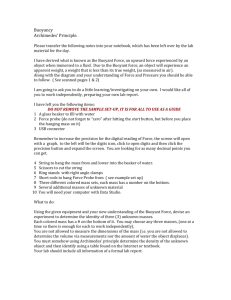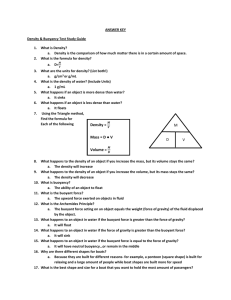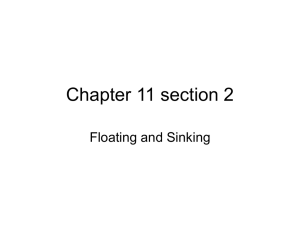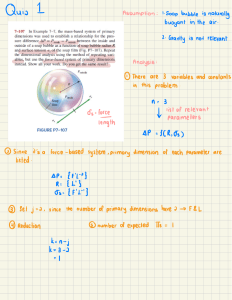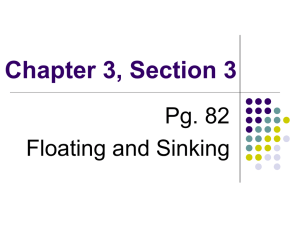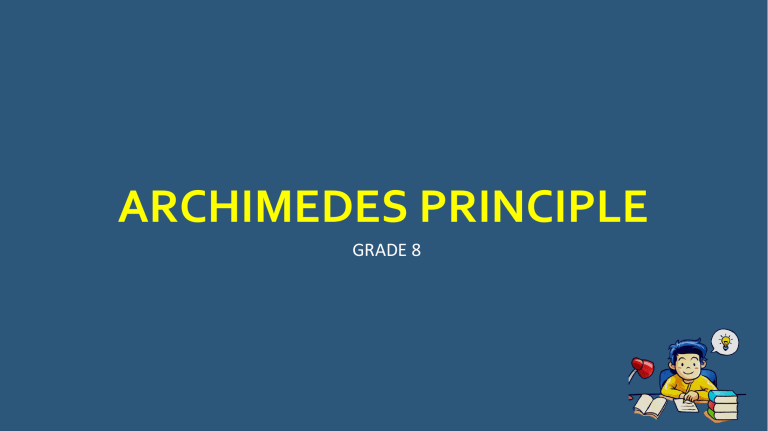
ARCHIMEDES PRINCIPLE GRADE 8 STANDARD COMPETENCE 3.8 Describe the pressure of substances and their application in everyday life, including blood pressure, osmosis, and capillarity of transport tissue in plants OBJECTIVES Measure the buoyant force acting on an object Solving problems about buoyant force What is the Archimedes’ Principle? • Archimedes’ principle states that: An object immersed in a liquid experiences an upward force (buoyant force), How to measure a buoyant force? Buoyant Force weight of the object on air weight of the object on water Loss in weight = buoyant force Buoyant force is equal to the weight of the fluid displaced. Archimedes’ Principle Formula • In simple form, the Archimedes law states that the buoyant force on an object is equal to the weight of the fluid displaced by the object. Mathematically written as: Fb = ρ x g x V Where: ρ is the density of the liquid, V is the volume of liquid displaced and g is the acceleration due to gravity. Problem 1 1. Archimedes immersed a gold crown with the mass of 0.5 kg completely under water. If the volume of water spilled was 50 cm3, the buoyant force acting on the gold crown was... (density of water = 1000 kg/m3 , and g = 10 N/kg) A. 0.25 N B. 0.50 N C. 2.50 N D. 5.00 N Problem 2 2. An object in the form of a block having a volume of 22.5 m3 is fully submerged in water. If acceleration of gravity g= 10 m/s2 and density of water 1,000 kg/m3, then the magnitude of bouyancy force acting on the object is .... Types of Buoyancy 1. Positive buoyancy : Floats If Buoyant force > weight of the object If density of water > density of the object 2. Neutral buoyancy : Hover If Buoyant force = weight of the object If density of water = density of the object 3. Negative buoyancy : Sinks If Buoyant force < weight of the object If density of water < density of the object Problem 3

